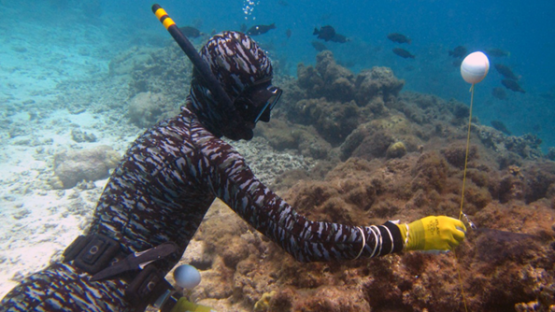IAEA Member States of the Asia and the Pacific region, including Small Island Developing States, are under threat year round from seafood toxicity caused by marine algae, often referred to as harmful algal blooms (HABs). Marine food is not only a major source of protein for local communities, but also plays an important role in the economic growth of the region. As a result, seafood toxicity endangers public health as well as causing socioeconomic problems.
Ciguatera Fish Poisoning (CFP) is regarded as a threat with global implications, due to the rapid development of travel, tourism and fish trade from the tropics, as well as the expansion of the bio-geographical range of the responsible microalgae Gambierdiscus, and of toxic fish generally.
Nuclear technology - specifically, nuclear-derived techniques such as Receptor Binding Assay (RBA) - have an important role to play in ocean monitoring and early warning of harmful algal blooms. Given the major impact of CFP on the health and economy of many countries around the world, and considering the need to build capacity in CFP field monitoring, the IAEA held a regional workshop at the Institut Louis Malardé (ILM), in Tahiti, French Polynesia. The meeting took place from 2 to 13 March, 2015, within the framework of a regional TC project1, and was attended by 17 participants from China, Indonesia, Malaysia, Marshall Islands, Oman, Pakistan, Philippines, Thailand, Viet Nam and Wallis & Futuna (sponsored by IOC-UNESCO).
The workshop programme included a series of lectures, together with laboratory and field training, as well as demonstrations of HAB species sample collection using novel passive monitoring devices, algae identification and isolation using light microscopy techniques, toxin extraction, and analysis of fish and algal samples using RBA.
In addition, project counterparts, IAEA staff and experts from national and international partner agencies including NOAA-USA, IOC-UNESCO and ILM, French Polynesia, met to update the regional project work plan, to design a pilot monitoring strategy for coastal management, and to develop a plan for compiling and sharing HAB event and HAB species distribution data in the IOC-UNESCO database. This will help establish a basis to determine, for the first time ever, global HAB status.
This regional project in Asia and the Pacific, together with similar technical cooperation projects using nuclear techniques for biotoxin monitoring in both Latin America and Africa, will increase the amount of global HAB data available. It will also enhance Member State capacities to prevent, control and mitigate HABs, and will support sustainable socioeconomic and environmental development in IAEA Member States.
This photo essay provides further insights into the work being conducted by the IAEA in cooperation with its Member States to mitigate harmful algal blooms.
__________
1 RAS/7/026, ‘Supporting the Use of Receptor Binding Assay (RBA) to Reduce the Adverse Impacts of Harmful Algal Toxins on Seafood Safety’.


